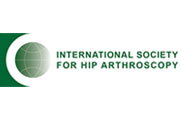Publications
Categories
The economic impact of geriatric hip fractures
Hip fractures, a significant cause of morbidity and mortality in the elderly, are expected to exponentially increase in frequency over the next 50 years as a result of increased life expectancy and population growth.
Do all hip fractures result from a fall?
Although most fractures of the proximal femur result from a fall and are related to direct loads to the hip, there is evidence that intrinsic factors, such as muscle contraction, can result in a hip fracture and subsequent fall. This paper reviews the current literature on the various mechanisms of femoral neck and intertrochanteric fractures
Complications of tissue expansion in a public hospital
Avoidance of complications in tissue expansion requires careful outpatient observation and consistent follow-up-two factors that are difficult to manage in a city hospital-based population. To determine the complication rate of tissue expanders in a given population, the authors reviewed retrospectively 34 tissue expanders placed in 30 patients at a New York City public hospital over a 7-year period from 1989 to 1996.
Effect of previous cerebrovascular accident on outcome after hip fracture
OBJECTIVE: To evaluate the effect of previous cerebrovascular accident on outcome after hip fracture. STUDY DESIGN: Prospective, consecutive. PATIENTS: From July 1987 to March 1997, 862 community-dwelling patients sixty-five years of age or older who had sustained an operatively treated femoral neck or intertrochanteric fracture were prospectively followed.
Imaging of the elbow in the overhead throwing athlete
Elbow injuries in athletes who perform overhead throwing motions often present diagnostic challenges because of the undue stresses and often chronic, repetitive patterns of injury. Accurate and efficient assessment of the injured elbow is essential to maximize functional recovery and expedite return to play.












